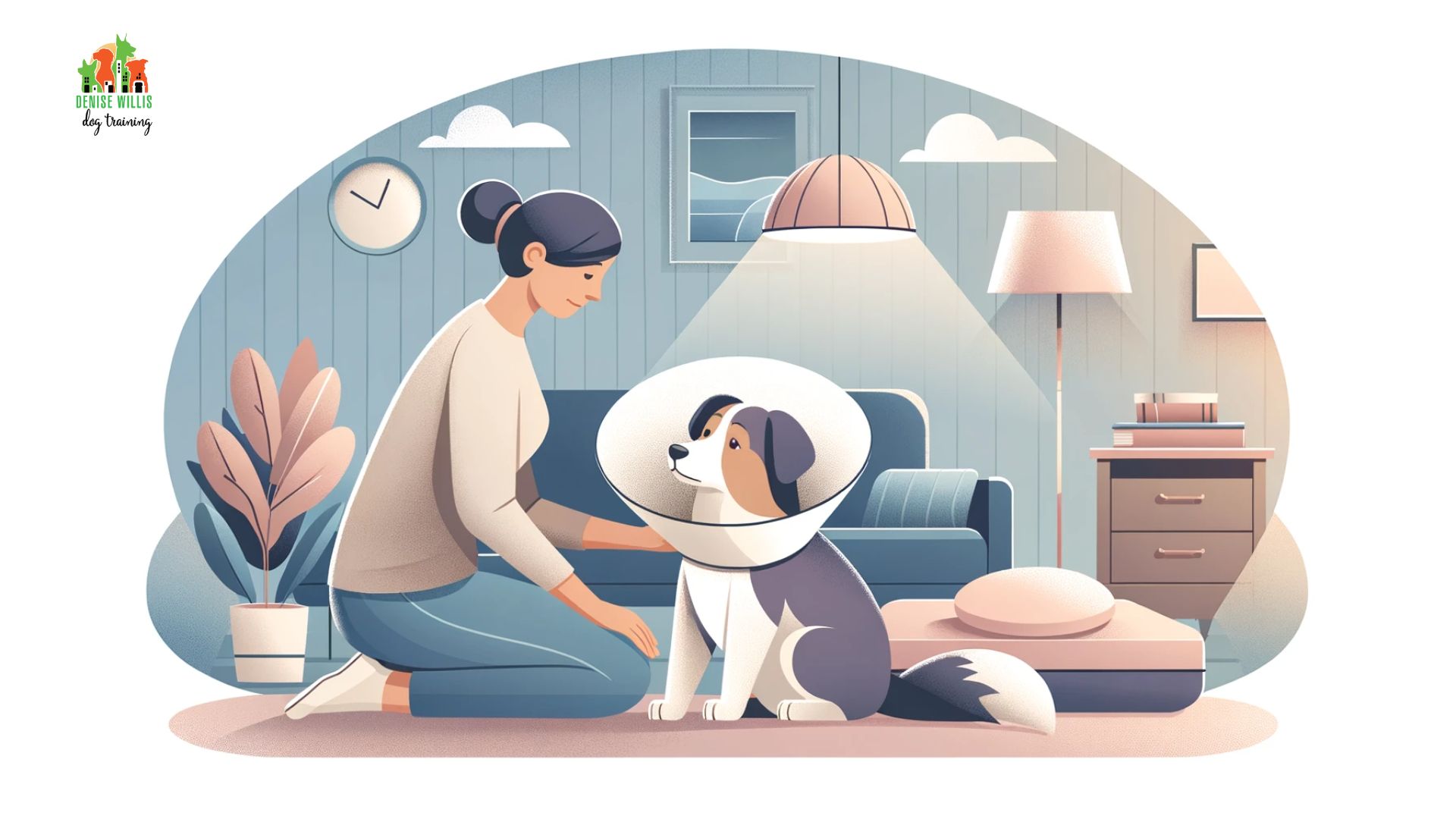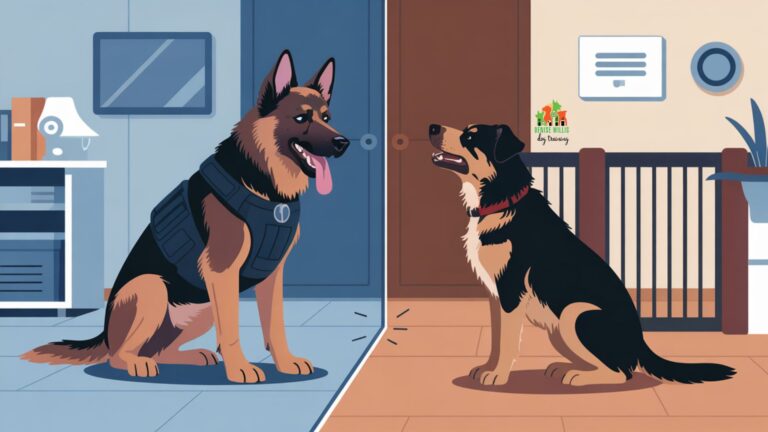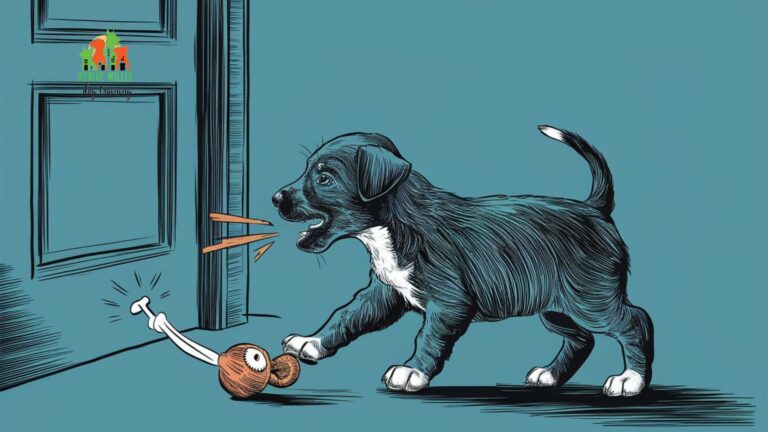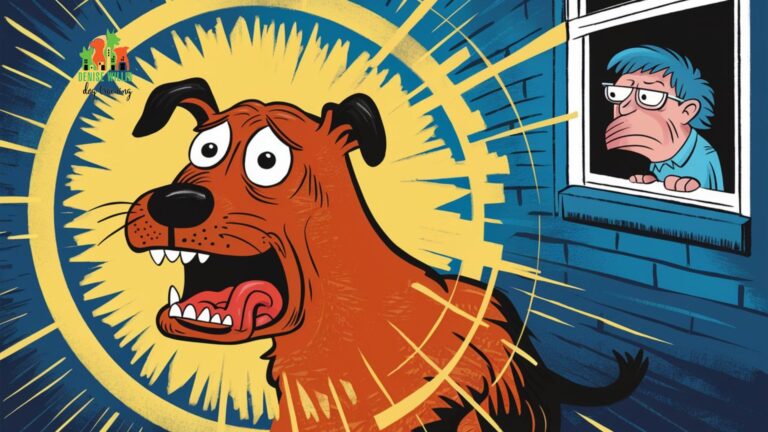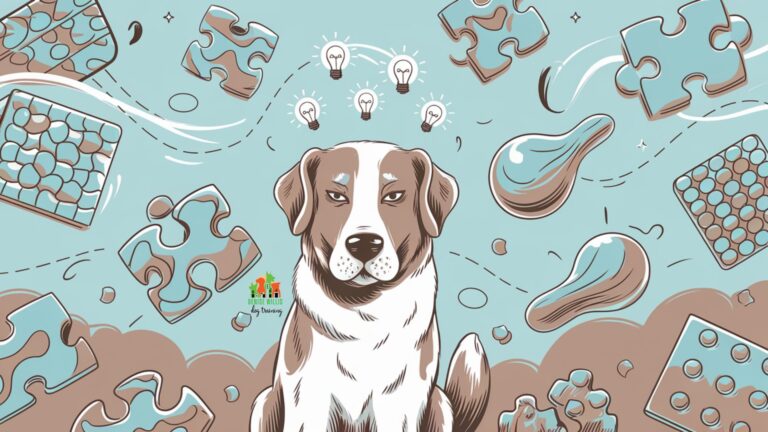Dog Aggression After Surgery: Professional Insights into Post-Operative Behavioral Shifts
📍 Service Area Notice: DW Dog Training provides in-person training services exclusively in the Greater Baltimore area. While our blog content is designed to help dog owners internationally, our hands-on training services are locally focused. For readers outside our service area, we hope you find value in our articles and welcome you to reach out with questions!
Undergoing surgery can be a traumatic and unsettling experience for dogs that may lead to behavioral changes like aggression after they return home. As a dog owner, it’s important to understand common post-surgery dog behaviors so you can properly care for your pup during recovery.
This guide covers everything you need to know about dog aggression after surgery—from the causes to management tips—to help your furry friend heal comfortably.
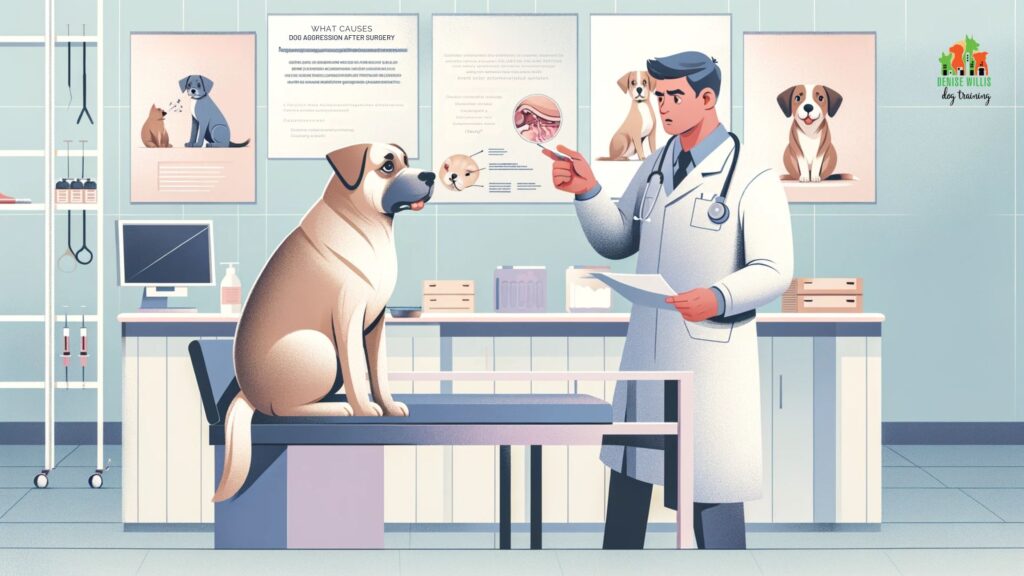
Key Takeaways: Supporting Your Dog After Surgery
Undergoing surgery and recovering is distressing for dogs, often leading to behavioral changes like aggression, anxiety, clinginess and more. As a dog owner, keep these takeaways in mind:
- Get educated on common post-surgery dog behaviors: Knowing what to expect reduces worry when dogs don’t act like themselves as they heal. Problems like aggression have understandable roots in surgical pain, stress, etc.
- Contact an expert trainer at the first signs of issues: Nipping behavior problems in the bud prevents ingrained habits. Certified trainers like those at DW Dog Training quickly evaluate root causes and customize training plans accordingly.
- Prioritize giving your dog proper rest: Enforcing crate rest and lifestyle adjustments prevents overexertion so surgical sites can repair. Cater activities and environment to limit stress during recuperation as well.
- Utilize medication if necessary: Sometimes anxiety medications or sedatives help dogs cope when paired with training. Consult your veterinarian about suitable prescription options for your dog’s needs.
- Document and celebrate small wins: Note behavioral improvements in a journal. Even slight progress deserves praise and rewards to motivate your dog during the difficult recovery period.
With attentive care from pet owners, plus customized support from pro trainers like those at DW Dog Training, dogs bounce back to normalcy after surgery along an appropriate timeline. Reach out today if your dog is struggling.
What Causes Dog Aggression After Surgery?
There are a few potential reasons why previously friendly or docile dogs may act aggressively after having surgery. Some of the most common causes include:
Lingering Pain from the Procedure
Dogs associate the pain and trauma from surgery with the environment or other dogs around them. As a knee-jerk reaction, they may snap or bite at other pets that approach or touch their sore area. Physical discomfort causes them to feel irritable and reactive.
Emotional Trauma
The stress of surgery and a long stay at the animal hospital can cause anxiety, fear, or insecurity in dogs. They don’t understand why they went through this upsetting event. When they return home with these unresolved negative emotions, it often surfaces as sudden aggression with family, other household pets, or unfamiliar dogs.
Disruption to Established Hierarchy
Taking your dog away for surgery disrupts the order of things in a multi-pet home. While one dog is gone for an extended period, the other pets establish a new hierarchy in the interim.
When the dog comes home with strange smells from the vet clinic, it causes confusion about their place in the pack order. The other animals may act dominantly or aggressively to keep the returning dog “in its place” below them in the new hierarchy.
Unfamiliar Smells from the Vet Clinic
Dogs rely heavily on scent signals and cues. After a surgical procedure and overnight stay at the animal hospital, your dog comes home covered in strange new smells like:
- Other dogs/cats from the vet clinic
- Medicine and chemical odors
- Pungent antiseptic solutions used for cleaning
- Traces of anesthesia/medications
These unfamiliar smells can trigger fear and defensive aggression in dogs when they return home. Their housemates don’t recognize their scent so they react to the odd-smelling dog as an intruder or foreign threat.
Table 1: In-Depth Analysis of Common Post-Surgical Dog Behaviors
| Behavior | Symptoms | Root Causes | Impact |
| Aggression | Growling, biting, snapping, lunging, air-snapping, stiffening, staring, possessiveness | Pain association, stress, routine disruption, confusion | Safety issues, liability concerns, relationship damage, inability to have guests over, veterinary/grooming difficulties |
| Anxiety | Pacing, panting, whining, hiding, shaking, trembling, dilated pupils, trouble sleeping | Trauma (PTSD), severe routine disruption, smells/environments triggering memories | Constant state of distress, inability to relax, exacerbation of other medical issues (e.g. gastrointestinal problems) |
| Attention-Seeking | Incessant pawing/nudging, excessive barking, blocking pathways, destructive behavior when left alone | Insecurity due to change, fear of being abandoned | Severely dependent behavior, inability to leave dog alone, destruction of household items |
How to Manage Post-Surgical Dog Aggression
While aggression after surgery may feel unavoidable at times, there are ways to curb and manage this behavior through patience and training techniques like:
Limit Interactions in The Beginning
When your post-surgery dog first comes homes, limit contact with other pets initially. Confine your recovering dog to a quiet room or area of the home so it has time to relax and destress before interacting again with the other animals.
During short, controlled meetings, keep your dog on a leash so you can quickly restrain it or remove it from a situation if you spot signs of aggression brewing. Provide lots of praise and treats for calm behavior around the other pets.
Be Extremely Patient
It takes time for dogs to overcome surgery-related trauma, pain, smells, etc. Set realistic expectations for the recovery timeframe. Some dogs take weeks or months to regain their equilibrium emotionally and physically.
The freshness of the hospital smells will fade gradually. Don’t scold growling; that will only elevate your dog’s anxiety. With consistent positive reinforcement training and your reassuring presence, aggressive tendencies typically resolve over time.
Consult With a Dog Trainer
For serious or prolonged post-surgery aggression issues, consult a professional dog trainer or veterinary behaviorist. They can assess your dog’s unique situation and offer customized behavior modification tips. Through tactics like counterconditioning and desensitization training, your dog can unlearn negative associations with surgery triggers.
While natural remedies take patience on the pet owner’s part, prescription anti-anxiety medication from your vet can also help take the edge off and make training easier on your dog. Their quality of life greatly impacts how quickly they bounce back emotionally post-surgery.

Common Dog Behaviors After Surgery
On top of potential aggression, dogs often exhibit other personality and behavior changes after undergoing surgery. Knowing what to expect can prevent worrisome panicking on your part.
Monitor your dog closely for signs of any of the following common post-surgical behaviors:
Depression
Don’t be surprised if your canine friend acts lethargic, less active, or disinterested after surgery, especially in the first few days home. The anesthesia and medications may take some time to fully wear off. Dogs also feel sore, fatigued, and overwhelmed in the initial recovery period.
On top of physical malaise, some dogs experience depression or uncertainty after a trip to an animal hospital because it disorients their routine. All the enriching walks, playtime, and affection is abruptly halted during their stay. Make up for lost time with extra TLC!
Excessive Panting
Panting and whining are signs your post-surgery pup is feeling anxious or in pain. Other pain signals include reluctance to move, aggression when touched near surgical sites, restlessness, hiding, lack of appetite, etc.
If excessive panting persists for more than a day or so, contact your vet; your dog may need prescription pain medication or sedatives to take the edge off while healing. Rule out medical complications too.
Loss of Appetite
Refusing food after surgery is very common in dogs. The general anesthesia often leaves dogs feeling nauseated or with an upset stomach initially. Their first bowel movements may also be irregular after fasting before surgery.
Try tempting your pup with bland but appetizing foods like chicken, pumpkin purée, rice, etc. Avoid rich or spicy foods. Smaller portions also feel less overwhelming. Their appetite should normalize within a week or two. Always call your vet if lethargy or appetite problems worsen or endure beyond that timeframe though.
No Bowel Movements
Along with disinterest in food, your post-surgery pup may not pass stools as frequently at first, and defecation urges/timing may feel “off.” Certain pharmaceuticals have side effects like temporary constipation or loose stools too. Reintroduce fiber slowly once eating normalizes, exercise restrictively builds back up, and the gastrointestinal tract regulates.
Attention-Seeking Behavior
Some especially social dogs become very clingy and attention-seeking after surgery due to feeling vulnerable or insecure. Coddling could reinforce whiny, “needy” behavior long-term though. Gently praise calmness and independence in your recovering patient. Additionally, lavishing high-value treats can lead to obesity, which jeopardizes joint surgery outcomes.
Indoor Messes
Confinement, immobility, and strong medications make potty training accidents somewhat inevitable post-operatively. Unlike baseline house training regression though, dogs typically don’t soil their beds when sore. If they mess away from the rest area, it likely signals incomplete bladder/bowel emptying rather than defiance. However, territorial marking could also be a factor, especially with same-sex pets in multi-dog homes. Thoroughly clean soiled zones with enzymatic odor neutralizers regardless.
Excessive Licking & Self-Chewing
Fresh surgery stitches can itch badly. Elizabethan collars prevent dogs from licking wounds but don’t deter attempts to bite or scratch skin near the afflicted leg or torso. Infections happen without vigilant monitoring. Some dogs focus oral fixation tendencies into benign behaviors like consumable chews.
Talk to your vet about ointments, wraps, or anti-inflammatory medications to ease the discomfort that drives excessive licking or chewing. They may also suggest anti-anxiety medications for obsessive tendencies if the behavior persists beyond a few days post-discharge.

Caring For Your Dog After Surgery
As your pup recovers from anesthesia and acclimates in the first few weeks post-op, their comfort, safety, and mobility require special attention. Be sure to:
Provide a Calm & Quiet Recovery Space
Dogs need ample rest after surgeries or injuries without frightening stimuli. Confine them to a comfortably sized, familiar crate in a peaceful room during nap times and when you can’t actively supervise. Supply fresh water, dry kibble, chew toys, and plush beds so they can self-soothe as needed.
Stick to Short, Slow Leash Walks
Follow all activity restrictions from your veterinary team carefully, even if your dog acts energetic. For most orthopedic operations, including TPLO surgery, that entail keeping dogs leash-walked only for bathroom purposes initially. Slowly graduate back to normal durations over weeks as the injury site fortifies or upon doctor approval to maximize surgical benefits long-term.
Provide Mental Stimulation
Prevent boredom during mandatory rest periods by providing puzzle feeders loaded with kibble or treats, food-stuffed chew toys, music, soothing pet TV programs, durable rawhides, etc. Anything engaging that doesn’t require standing or rigorous activity works wonderfully! Shelter dogs especially benefit from enrichment as their stimulus changes drastically post-adoption.
Gently Encourage Movement
While running and jumping are off the table temporarily, you don’t want your dog parking it 24/7 either. Light activity facilitates blood flow to nourish surgical sites with nutrients for proper healing. Plus, it prevents muscle loss from long-term inactivity. Assist dogs along carpeted floors with a supportive mobility sling for short potty walks. As your vet approves increased distances, maintain a relaxed pace at their side.
Discourage Strenuous Play
Kids and puppies struggle to dial back vigorous play drives. If rambunctious family members can’t resist instigating play fights with recovering dogs, confine your surgical patient elsewhere. Well-meaning but overly-enthusiastic kids risk tearing internal or external stitches. Separation prevents undesirable interactions.
Apply Recommended Leg Wraps/Bandages
Veterinarians demonstrate proper bandaging techniques for various post-op procedures. Request written wrapping instructions too for reference. Discharges typically detail how long to maintain leg wraps or bandages, along with warnings against getting them wet. Re-wrapping prevents debris build-up within layers against the incision during bathing restrictions.
Maintain a Healthy Diet
What goes in must come out—make sure your dog’s intestinal output doesn’t irritate delicate stomach and abdominal surgery sites. Feed an easily digestible diet without excess fat or garbage ingredients following neutering, tumor removal, gastrointestinal operations, etc. Never change food suddenly though. Gradual adjustments are key for digestive health.
Monitor Incisions & Watch for Complications
Check your dog’s incision and surrounding skin at least twice daily for redness, swelling, discharge, odor, missing sutures, etc. Dissolvable sutures take weeks to absorb, so expect slowly shrinking threads. Report anything concerning, like leakage, foul smells, accumulating debris in sutures, broken stitches, etc. to your vet since they risk serious complications like infections when neglected.
Recommended Products for Post-Surgery Dog Care
While proper veterinary care is essential during your dog’s post-surgical recovery, having the right supplies at home can make the process smoother and less stressful for both you and your furry companion. From crates and beds that provide a cozy, confined space for healing to interactive toys that keep their minds engaged, these products offer convenient solutions to common post-operative challenges.
Crating and Confinement Essentials:
One of the keys to successful recovery is providing a safe, comfortable space for your dog to rest. Consider investing in a sturdy, well-ventilated crate or exercise pen, like the Midwest Dog Crate. Pair it with a cozy, orthopedic bed, such as the PupRug Memory Foam Dog Bed, to keep your pup comfy during prolonged confinement periods.
Activity-Boosting Puzzle Toys:
To keep your dog’s mind engaged during restricted activity, interactive puzzle toys are a lifesaver. Canine-approved options like the Outward Hound Puzzle Brick Dog Toy or the Trixie Dog Activity Flip Board offer mental stimulation and slow-feeder benefits to prevent boredom and excess weight gain.
Post-Surgical Wound Care Essentials:
Proper wound care is crucial for preventing infections and promoting healing. Stock up on supplies like Self-Adherent Cohesive Bandages and Antimicrobial Wound Spray to protect surgical sites from licking and chewing.
Calming Supplements and Pheromones:
The stress of surgery can exacerbate anxiety and aggression in some dogs. Consider trying calming supplements like Zesty Paws Stress & Anxiety Bites or pheromone diffusers like the Relaxivet Calming Diffuser Kit to help your pup stay relaxed during recovery.
Mobility Aids and Assistive Devices:
Depending on your dog’s specific procedure, mobility aids like Dog Lifting Harnesses or Dog Ramps for Car and Dog Ramps for Home can make post-operative movement easier and safer for both you and your pup during the early stages of recovery.
By incorporating these products into your post-surgery dog care routine, you can help ensure a smoother, more comfortable recovery process for your furry companion.
The Takeaway
Surgeries, even quick outpatient procedures, take a huge toll on canine patients. Physically restricted and bombarded with medications, unfamiliar settings and people, mystery procedures, and abrupt routine disruption; they desperately need consoling recovery assistance.
With watchdog-level vigilance from their loving owners, even older dogs and extremely anxious rescues endure surgical interventions amazingly well. Patience and compassion through each phase speed their bounce back tremendously. You’ll have your happy pup back to their regular charismatic selves in no time by following these vet-approved aftercare guidelines!
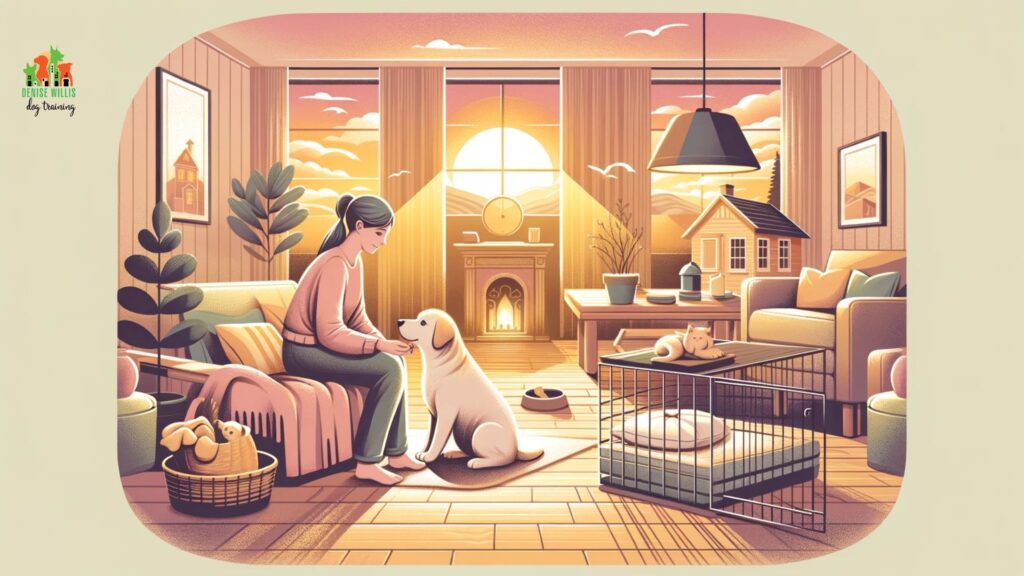
Has Your Dog Been Acting Aggressively After Surgery? DW Dog Training Can Help
Undergoing surgery and medical procedures can be very disorienting and uncomfortable for dogs. It’s common for them to experience emotional distress, confusion, and even aggression during recovery.
If your dog has recently had surgery and is displaying uncharacteristic aggressive behaviors like growling, snapping, or biting, the expert trainers at DW Dog Training can help. We specialize in addressing post-operative behavioral issues in dogs of all ages and breeds.
Our skilled trainers will evaluate your dog’s unique situation to pinpoint the triggers behind the aggression. We then create customized training plans utilizing positive reinforcement techniques to resolve the unwanted behaviors. By rebuilding your dog’s confidence, establishing clear structure/routines, and providing mental stimulation, we set them up for success during convalescence.
Table 2: DW Dog Training’s Multi-Tiered Evaluation Process
| Assessment Tier | What’s Evaluated | Goals |
| Medical History Audit | • Procedure type • Medications given • Recovery instructions | • Rule out medical complications • Assess medication side effects |
| Home Environment Audit | • Family composition/dynamics • Other pets • Workspace conditions | • Identify behavior triggers • Note routine disruptions |
| Initial Behavioral Evaluation | • Reactivity thresholds • Verbal/body language cues • Reward motivators | • Determine aggression triggers • Create training blueprint |
| Ongoing Progress Assessments | • Fear levels • Focus ability • Obedience regression | • Fine-tune techniques • Measure successes |
In some cases, anti-anxiety medication may be recommended in conjunction with behavior modification training to ease the transition. Through our compassionate and patient approach, we achieve lasting improvements in post-surgical aggression and other recovery-related problems.
If your dog is struggling after a medical procedure, please reach out. We’re here to provide caring, professional support during this challenging period. From basic obedience training and leash manners to specific behavioral concerns, DW Dog Training has a solution tailored to you and your dog’s needs. Contact us today to learn more about how we can help your dog find relief and comfort following surgery. Our top priority is their health, happiness, and safety as they heal under our thoughtful guidance.

